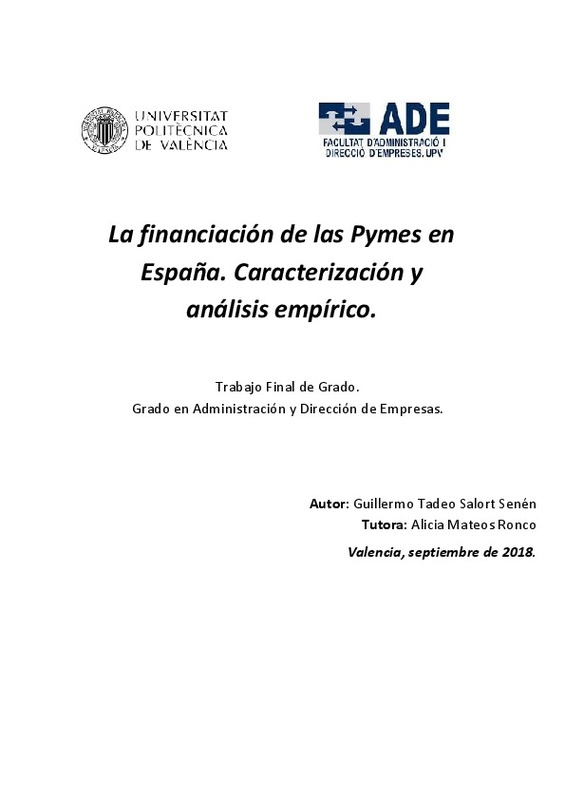|
Resumen:
|
[ES] El destacable papel que las pequeñas y medianas empresas (Pymes) desempeñan en la economía de todos los países ha generado un merecido interés por el estudio de sus condiciones de acceso a las diferentes fuentes de ...[+]
[ES] El destacable papel que las pequeñas y medianas empresas (Pymes) desempeñan en la economía de todos los países ha generado un merecido interés por el estudio de sus condiciones de acceso a las diferentes fuentes de financiación presentes en los mercados financieros. En el caso de España el interés es claro: las Pymes representan aproximadamente el 90% del total de las empresas existentes y generan el 80% del empleo. Sin embargo, estas empresas son las más vulnerables a la hora de conseguir la financiación necesaria para sus proyectos de inversión. De hecho, un buen número de investigaciones han evidenciado esta realidad, habiendo acuñado el término déficit de financiación (finance gap), característico de las Pymes. Este trabajo se hace eco de esta problemática, de especial incidencia en nuestro país a consecuencia de una situación económica que ha tenido una mayor intensidad y duración que en otros países de nuestro entorno. La etapa de bonanza se caracterizó por una fuerte expansión crediticia, mientras que la de recesión estuvo marcada por la escasez de crédito, derivada de los problemas que también sufrió el sistema bancario. El presente trabajo realiza un análisis, desde una perspectiva empírica, de las principales fuentes de financiación que utilizan las Pymes españolas. Para ello, se parte de una caracterización de los distintos instrumentos financieros del mercado utilizados por la Pymes españolas, desde los más conservadores hasta los más innovadores y actuales, que ganaron peso como consecuencia de la crisis económica y financiera. La utilización de las distintas fuentes de financiación por estas empresas se aborda de forma empírica a través del análisis de una muestra representativa de Pymes españolas, que permitirá extraer conclusiones sobre su estrategia de financiación en atención a sus especializaciones productivas y estructura económico-financiera.
[-]
[EN] The remarkable role that small and medium-sized enterprises (SMEs) play in the
economy of all countries has generated a deserved interest in the study of their
conditions of access to the different sources of financing ...[+]
[EN] The remarkable role that small and medium-sized enterprises (SMEs) play in the
economy of all countries has generated a deserved interest in the study of their
conditions of access to the different sources of financing present in the financial
markets. In the case of Spain, the interest is clear: SMEs represent approximately 90%
of the total of existing companies and generate 80% of employment. However, these
companies are the most vulnerable when it comes to getting the necessary financing for
their investment projects. In fact, a good number of investigations have shown this
reality, having coined the term financing gap, characteristic of SMEs. This work echoes
this problem, especially in our country as a result of an economic situation that has had
a greater intensity and duration than in other countries in our environment. The boom
phase was characterized by a strong credit expansion, while the recession was marked
by a shortage of credit, derived from the problems that the banking system also
suffered. The present study carries out an analysis, from an empirical perspective, of the
main sources of financing used by Spanish SMEs. To do this, we start with a
characterization of the different financial instruments of the market used by Spanish
SMEs, from the most conservative to the most innovative and current, which gained
weight as a result of the economic and financial crisis. The use of the different sources
of financing by these companies is addressed empirically through the analysis of a
representative sample of Spanish SMEs, which will allow drawing conclusions about
their financing strategy in response to their productive specializations and economic financial
structure.
[-]
|







